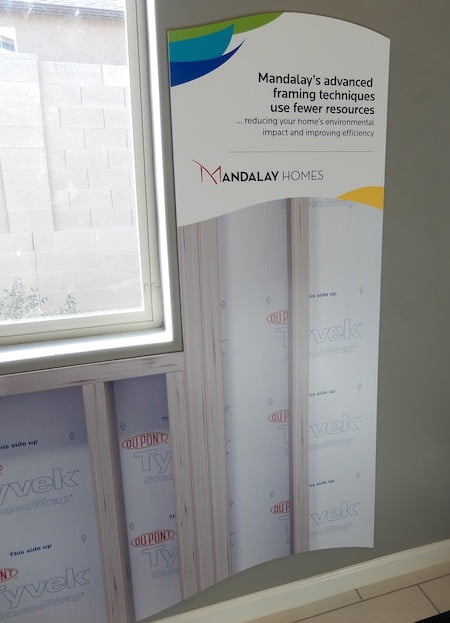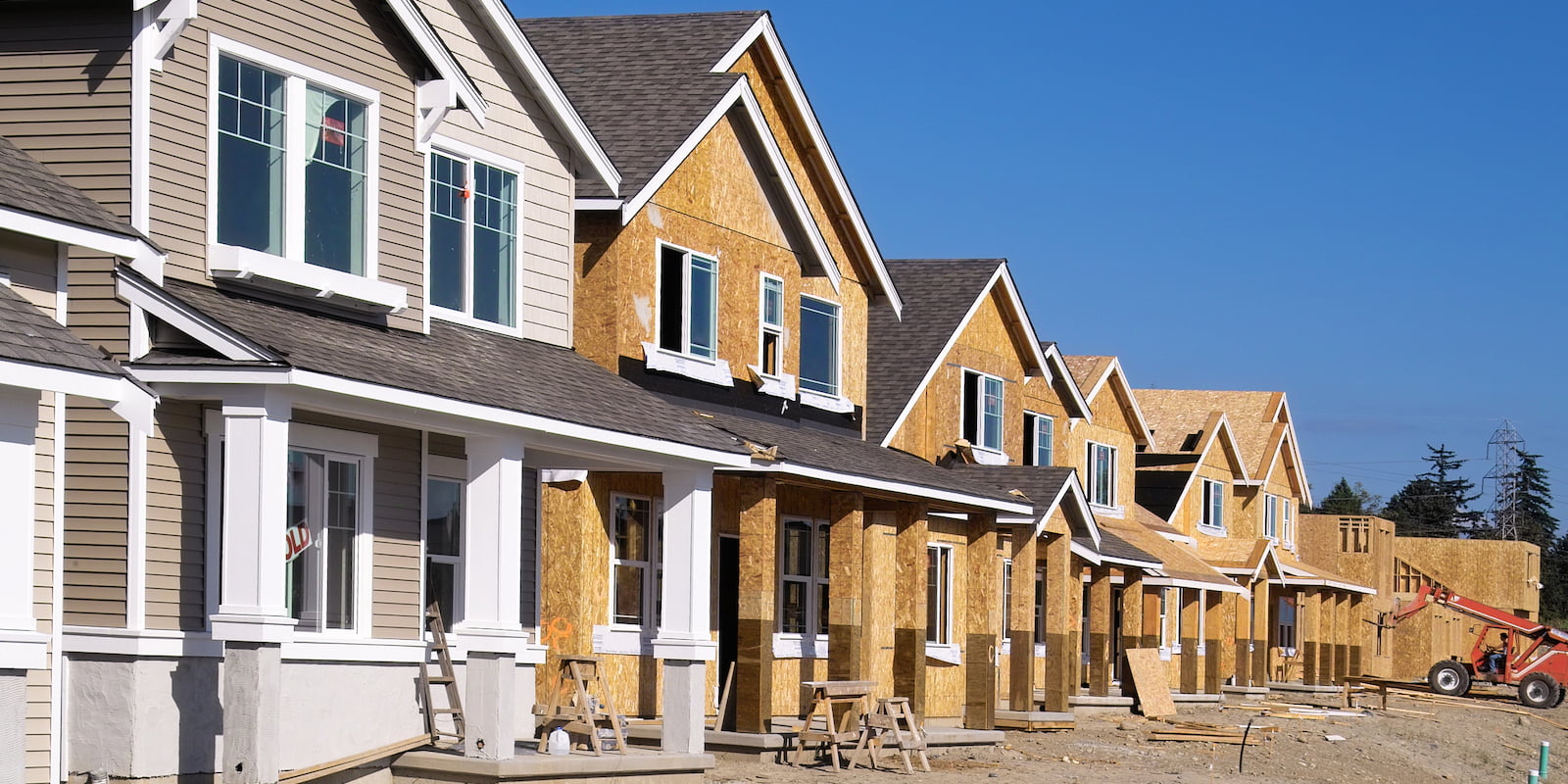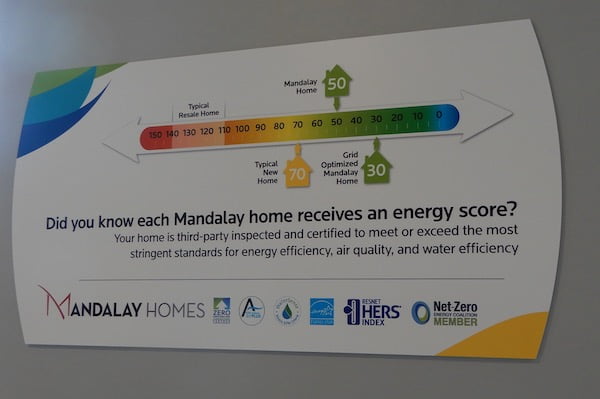Production builders are uniquely positioned to identify and fulfill the needs of mass market home buyers. Most buyers assume that a new home is more comfortable, healthier, and more durable than an existing home, including the one they are leaving behind. Zero energy homes check all these boxes. Unfortunately, there is one misconception that prevents many production builders from offering zero energy alternatives. It’s the perception that zero energy homes are not affordable. In fact, zero energy homes cost less to own, provide their own buying power and build wealth starting the very first month.
The housing market is starting to change as the number of zero energy homes and zero energy ready homes grows steadily each year. Here are a few points for production builders to consider as they contemplate the pros and cons of joining the shift to zero.
- Energy efficiency is slam dunk cost effective for the consumer. They can afford a slightly higher mortgage payment because the energy costs are lower.
- This selling point must become second nature to the sales team and lenders.
- Many builders are moving incrementally from their current construction practice toward higher efficiency.
- A good first step is to have all homes certified by a third-party certification program, such as ENERGY STAR or Zero Energy Ready Homes.
- Experience gained by participating in one of these entry level programs can be used to plot a course toward zero.
- Energy modeling can be used to cost-optimize a package of performance features to get the most energy efficiency for the least cost.
- While some builders start by offering zero energy options, it is best for builders to transition all their homes to high performance and then to all zero energy.
- There are several successful production builders who have made the transition to 100% zero.
The biggest obstacle to production builders getting their developments on the path to zero is finding a way to pass on the higher initial cost to buyers while showing them that they are getting a better home with a lower cost of ownership. This is not a technical construction issue but involves educating customers regarding the high value they are receiving, finding the right financing vehicle, crafting an effective marketing strategy that meshes with the builder’s business model.
Sales Team Training
Successful production builders recognize the critical importance of an effective sales team, whether they are in-house or independent brokers. While it’s easy to see solar panels or a heat pump water heater, most energy saving features are invisible, so selling high performance benefits takes specialized knowledge and skill. Detailed broker training is available online and in person. Every person on the sales team must be enthusiastic about energy efficiency, knowledgeable about its benefits, and effective in communicating these points.
 Marketing
Marketing
High levels of energy performance, along with the additional benefits of health, durability, and affordability, must be featured prominently in print and online advertising. Thrive Homebuilders in Denver is a good example of how energy features and benefits are presented on an equal footing with the common themes of location, finishes, and aesthetics.
Model homes must be staged to feature not only architecture and decor but must also highlight hidden energy performance features and benefits. One way to accomplish this is carefully executed signage that effectively identifies energy saving features and their benefits. Mandalay Homes in northern Arizona offers a good example of a production builder who has fully incorporated energy efficiency, water efficiency, and health into their business model and marketing.
Affordability
It’s ironic that many production builders target the price-constrained end of the market, while virtually ignoring a major factor in the affordability of home ownership. While energy is no less significant than other monthly costs, energy efficiency offers the unique ability to pay for itself. The tangible result for the home buyer is a lower cost of ownership each month. If marketed appropriately, it will create a competitive advantage for builders at the lower end of the market. Monthly utility payments can be redirected into higher mortgage payments — without adding to the buyer’s overall housing cost, giving them a better home, and a profitable, long-term investment in the home’s structure and equipment.
The financing conversation needs to be re-framed. Consuming energy (and water) every month is an expense. Reallocating that money to efficiency features is an investment with an immediate return. The average homeowner spends around $1945 per year on energy, according to the latest official figures available from the US Department of Energy. Reallocating those funds to a 30-year mortgage payment would allow the buyer to finance additional loan principal of $39,000. That is more than enough capital to pay for the improvements, increase builder profit, and reduce the total cost of ownership for the buyer.
Applying zero energy features to a home is a sound financial strategy that turns an expense into a profitable investment for the home buyer. When monthly earnings exceed the monthly debt service, it’s called a profit. Zero energy homes are investments that bring their own buying power to the table. The return on investment can often beat returns from stocks.
This cold, hard economic advantage seldom finds its way into the sales and marketing efforts that sell homes. Savvy production builders leap over the first-cost barrier and show buyers how zero energy homes are good investments. Builders who can facilitate this investment will reap the reward of more sales and higher profits.
Financing
One way to overcome any first cost barrier is long-term financing, which is exactly what a 30-year mortgage is intended to do. Most mortgage lenders will acknowledge that lower monthly expenses equal higher qualifying income, and that means streamlined underwriting and higher loan values. Research also shows that occupants of energy efficient homes pose a lower default risk.
For conventional mortgages with buyers who can afford large down payments, mortgage qualification is not a big issue. These buyers have the capability to borrow enough principal to reap the rewards. It’s the job of the sales team to show the financial benefits to these higher income buyers.
It’s borrowers on the margin that may bump into income limits and other underwriting obstacles. For them, conventional guidelines often prevent lenders from taking advantage of a buyer’s greater buying power. Two relatively new secondary market programs address this issue. They are Greenchoice from Freddie Mac and HomeStyle by Fannie Mae. Both programs offer higher loan-to-value and debt-to-income ratios. If lenders are uninterested in these opportunities, builders must press the issue by demonstrating and documenting the added value of zero homes to lenders and appraisers. Some areas offer financing innovations such as PACE loans, or green banks, such as the one in Connecticut.
Production builders and their agents can clearly document the added value of these highly energy efficient homes. Then they can request the lender utilize appraisers with green appraisal training. If certified green appraisers are not available, they can fill out the green appraisal addendum and make sure that the appraiser uses it. These methods make financing available to lower income homebuyers and help them bring the higher initial costs of energy efficient homes within their budgets.
Shape the Market
Finally, every successful production builder has developed an approach that works for them. Many target affordability and effectively use the economies of large scale and corporate buying power as instruments of their success. While there may not be fat in the profit margin, there are many ways to cover the costs of greater efficiency within the finite “buying power” amount described above. These ideas for affordable zero energy design and construction can be applied to the zero energy home developments, so both developers and their customers benefit.
Of course, most businesses are reluctant to fiddle with the formula that brought them past success. However, the businesses that continue to enjoy success are those that embrace and to some extent shape the future. Production builders have the capability and responsibility to spearhead the zero energy homes movement.
It would seem that any business person would jump at the chance to sell a slightly higher priced, more profitable, product that cost less to own for buyers. With thoughtful design, careful construction, skillful marketing, and enlightened financing, zero energy homes provide production builders with a superior business model that pleases customers, adds to their bottom line and is good for the planet.


